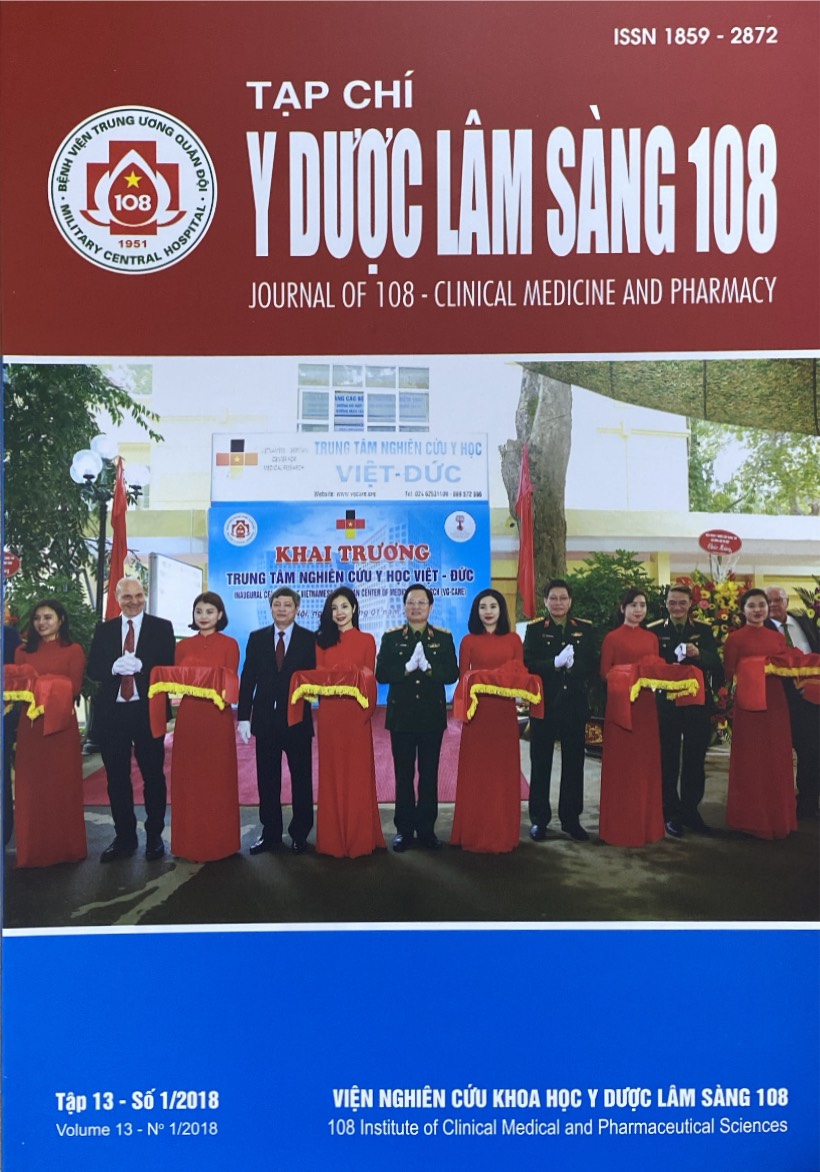The value of real-time PCR in detecting anaerobes in blood of patients with sepsis
Main Article Content
Keywords
Abstract
Objective: To evaluate the benefits of real-time PCR (RT-PCR) method to detect anaerobes in blood of patients with sepsis. Subject and method: 92 sepsis patients were enrolled on this study. Pathogen identification in each patient was performed by using both blood culture and RT-PCR concomitantly. Result: The rate of positive of culture, RT-PCR, combine culture and RT-PCR is 34.78%, 51.09%, 56.52% respectively. In total of 60 cases negative with blood culture there are 20 cases were positive with RT-PCR. In contrast, 5 cases were positive by blood culture but negative by RT-PCR. RT-PCR has been shown more advantage than blood culture since it can detect some bacteria S. aureus, S. pneumoniae, Enterococcus sp, especially obligate anaerobes like Bacteroides sp which were not detected by blood culture at the same patients. Conclusion: It has been shown that RT-PCR is one of potential support assay for detecting anaerobes in blood of patients with sepsis.
Article Details
References
2. Rajesh B and Rattan LI (2008) Essentials of medical microbiology. Ed. 4, Jaypee Brothers Medical Publishers (P) Ltd, B-3 EMCA House, 23/23B Ansari Road, Daryaganj.
3. Franklin R Cockerill III and Wilson, Walter R (1997) Analysis of 281,797 consecutive blood cultures performed over an eight-year period: Trends in microorganisms isolated and the value of anaerobic culture of blood. Clinical Infectious Disease 24: 403-418.
4. Andrew R, MB BS, MD(Res) (Co-chair) et al (2016) Surviving sepsis campaign: International guidelines for management of sepsis and septic shock: 2016. Critical Care Medicine 45(3).
5. Mervyn S (2016) The third international consensus definitions for sepsis and septic shock (Sepsis-3). JAMA 315(8): 801-810.
6. Trung NT et al (2016) Enrichment of bacterial DNA for the diagnosis of blood stream infections. BMC Infect Dis 16: 235.
7. Trung NT et al (2017) Clinical utility of an optimised multiplex real-time PCR assay for the identification of pathogens causing sepsis in Vietnamese patients. Int J Infect Dis.
8. Korber F et al (2017) SeptiFast versus blood culture in clinical routine - A report on 3 years experience. Wien Klin Wochenschr 129(11-12): 427-434.
9. Lutz EL, Klaus-Peter H, and Martina S (2009) Improved detection of blood stream pathogens by real-time PCR in severe sepsis. Intensive Care Medicine 36: 49-56.
10. Herne V et al (2013) Diagnostic performance and therapeutic impact of LightCycler SeptiFast assay in patients with suspected sepsis. European Journal of Microbiology and Immunology 3(1): 68-76.
 ISSN: 1859 - 2872
ISSN: 1859 - 2872
